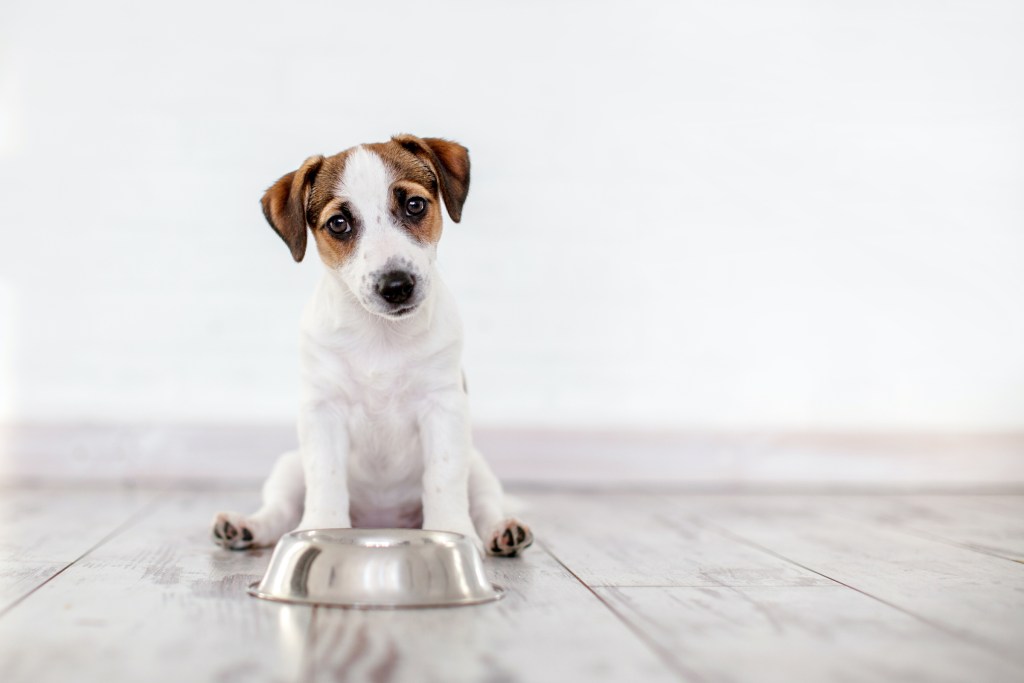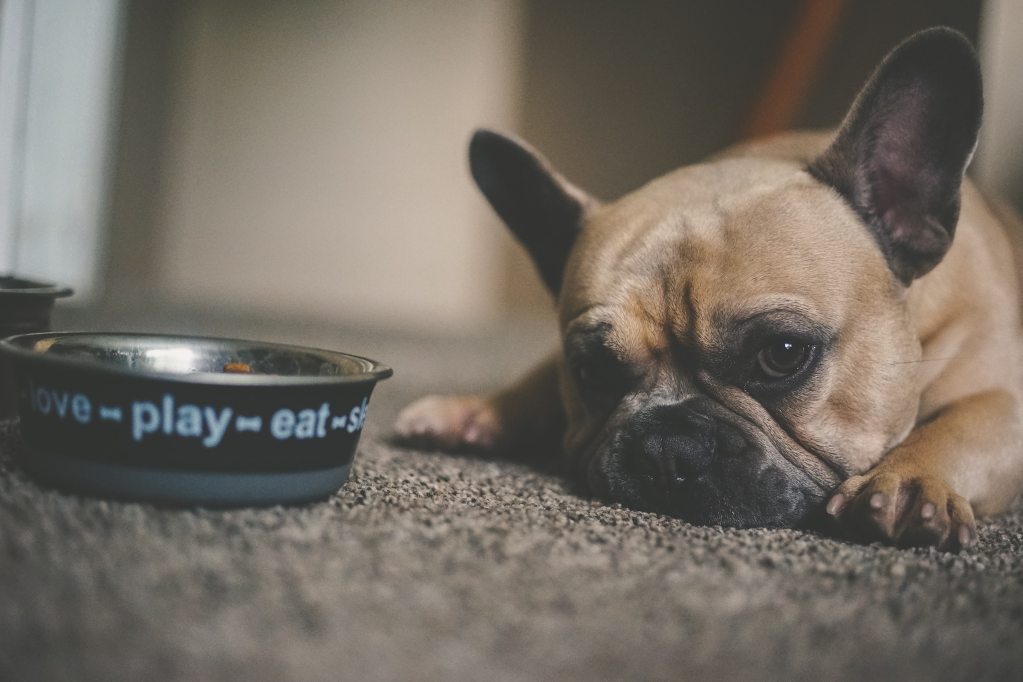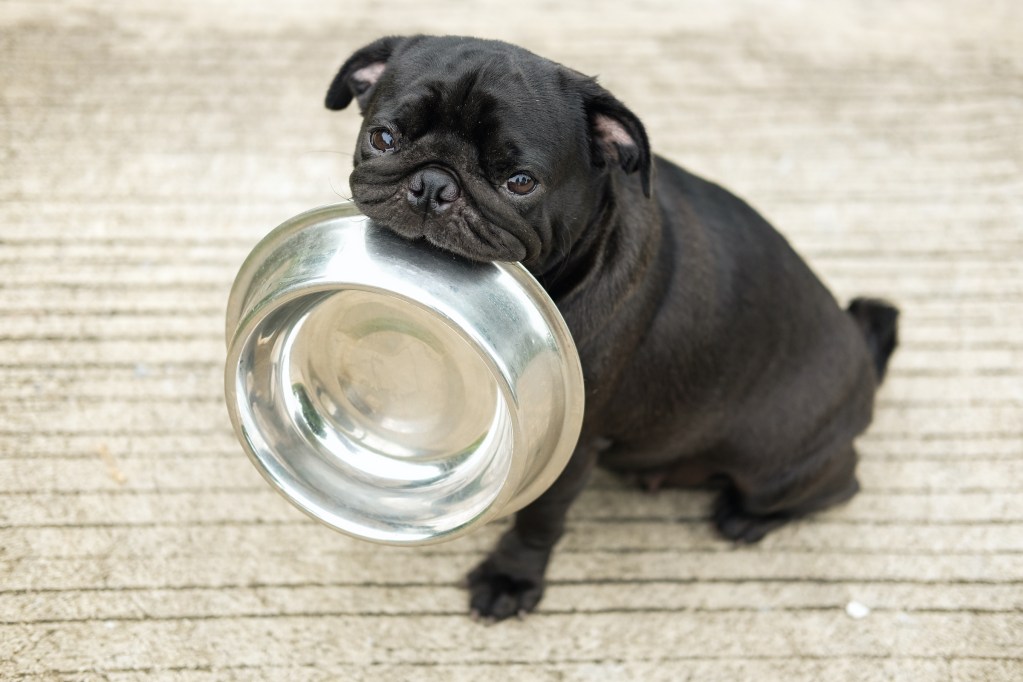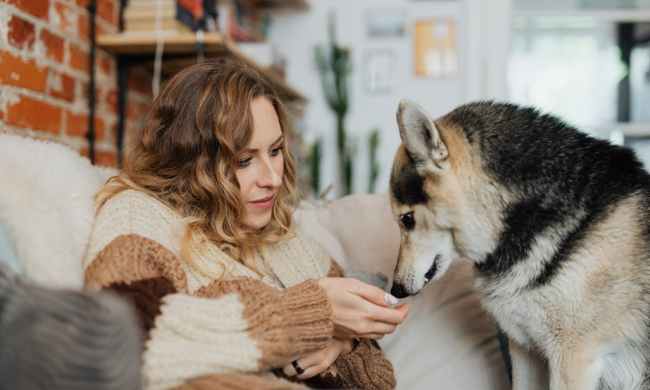Dog food isn’t just chicken and rice. As healthy as these staples may be, variety is just as important when it comes to creating a balanced meal for your fur baby. There are many safe and nutritious protein alternatives to chicken or your regular dog food, including turkey, beef, eggs, and even fish. Yep — fish.
Many people foods are known to be safe for dogs, but seafood doesn’t usually make the list. Fish certainly isn’t the most popular food for dogs, which might have left you wondering: Can dog eat seafood? Is seafood bad for dogs?

Can dogs eat seafood?
Absolutely! Dogs can eat seafood, but only when it’s prepared correctly. The meat of many fish species contains healthy fats and nutrients such as omega-3s that are great for a dog’s coat, but you must be extremely careful not to feed your dog certain parts of the fish, including bones — or shells, in the case of shellfish. Any seafood your pup gets also needs to be completely cooked, or you run the risk of bacterial or parasitic infection.

Benefits of feeding seafood to your dog
Seafood is a great and safe addition to your pooch’s diet when prepared correctly. It can complement their existing diet and can help cover some nutritional deficiencies. The main benefits of seafood for your dog are:
- A great source of omega-3 fatty acids
- High levels of quality protein
- Low levels of fat for weight control
- Flavor variety for picky eaters

Risks of feeding fish to your dog
When making the choice to add seafood to your four-legged friend’s regular menu, keep in mind that there are risks you must manage and avoid in order to prevent problems. Look out for the following:
- Introducing toxins, heavy metals, and pollutants
- Increased risk for bacteria like salmonella and listeria, as well as other parasites
- Canned fish contains preservatives that are harmful to dogs

Types of seafood that are safe for dogs
The most common types of seafood that you are likely to feed your dog are divided into two main groups: Shellfish and finfish. They are both safe for your pet, but there are specific ways to clean, prepare, and cook them to make a good meal for your dog. Brittle bones, shells, and crustacean heads and feet can damage your dog’s digestive system.
Shellfish: In this group, we include marine animals like shrimp, crab, oyster, scallops, and lobster. Mollusks are also in this group.
Finfish: This group includes many species like salmon, tuna, mackerel, sardines, and other big fish that have fins and are not marine mammals.

Feeding your dog shellfish
For the most part, your dog can eat shrimp, crab, and even lobster. The seafood needs to be thoroughly cooked — without any spices or seasoning — and must have the legs, shell, and tail completely removed. You want to start feeding them just a small portion since shellfish can cause an allergic reaction. Take it slow until you make sure your dog is not getting any ill reaction to the food.
Avoid any type of raw food, especially clams and oysters. They contain high levels of bacteria, viruses, and algae that can make your dog sick. You are better off steering completely away from feeding your pet this type of seafood.

How much fish can a dog have?
Just like with any food, too much of a good thing isn’t good at all. If a dog already eats store-bought kibble or wet dog food and is not in need of additional nutrition, seafood should be treated as, well — a treat. Treats should make up ten percent or less of a dog’s diet, no matter what type of food makes up that ten percent. Feeding your dog too much fish or too much of anything can increase their risk of weight gain, obesity, and other health concerns.
Because of seafood’s high levels of healthy fats and omega-3 fatty acids, some veterinarians may recommend a small serving several times per week as a nutritional supplement. For those who use fish as their dog’s main source of protein, however, following serving guidelines based on your dog’s breed and size is the best way to go.

How to prepare fish for dogs
Whether purchasing fish from the store or preparing it yourself, the same conditions apply. Before serving it to your pooch, make sure it is fresh, cleaned, deboned, cooked, and unseasoned.
It’s extra important to make sure all the bones are out, as they can injure your dog’s mouth or throat. Another surprising risk is improperly prepared fish skin. While delicious, the skin is just as likely as the meat to transmit illness if not cooked thoroughly — this is why turning it into a jerky-like treat is the safest way to serve your pup fish skin. Remember to remove as many scales as you can!
When cooking the fish itself, grilling, steaming, or broiling is a smart way to go — as long as your fish is totally cooked. It’s best not to feed your pup fried fish, though, as the oils and batter may upset her stomach and intestines. Also, never serve your dog the head, tail, or fins of a fish.
The following types of fish are great to feed your dog when properly handled and prepared:
- Wild-caught salmon: When cooked, this is a luxury meal for your dog that is full of nutrients and healthy oils. Make sure you don’t serve it raw since it can transmit a fatal parasite that can kill your dog in a very short time.
- Sardines: This small fish is a very healthy supplement for dogs that is easy to debone and can even be bought canned in water. Avoid seasoned varieties and oil.
- Flounder: This is a great treat when served as a filet. It’s full of protein and essential fatty oils.

Salmon fillets for dogs
One popular way of including fish in a dog’s diet is simply to share. If you’re making salmon for yourself one night, prepare a piece for Rover — no seasonings, of course! For convenience, you can give your dog canned salmon, as long as it’s packed in water, not oil. Boneless fillets also make great treats for dogs, though vets recommend limiting your doggo’s salmon intake to once a week or less.
For any dog and any food, portion control is key. Anything in excess can be unhealthy, but it’s important to be careful with fats, even healthy fats like salmon. Your vet can help you whittle servings down to the ideal size for your pet if you’re unsure. If you intend to replace part of your dog’s diet with fish, make sure she’s also getting the nutrients she needs through supplements or other foods, like veggies.

Fish that you should not give to your dog
Avoid tuna, swordfish, and any other big species with a long lifespan. They collect great amounts of heavy metal in their meat, which can have a negative effect on your dog. Also, moderation is key since too much seafood in the canine diet can cause weight gain and nutritional imbalances.
Another thing to remember is that seafood prepared for humans is always a big no-no. These dishes are normally very seasoned with spices that are harmful to dogs. Play it safe, and avoid feeding your dog food that might be tasty but harmful.
A balanced canine meal will include protein, fiber, fats, and carbohydrates. Fish is an excellent source of protein and vitamins, and veggies will help your pup get the fiber she needs. Starch can be your carb — think of starches and grains like pasta, potatoes, or rice. Lastly, a healthy fat source, such as safflower oil, helps bind the ingredients together and make the food nutritionally complete.
Whether fish is a treat or an everyday meal, it can certainly be a tasty break from chicken. Packed with protein and healthy fats, it’s nutritionally beneficial as well. You can also prepare it in myriad ways, which can be refreshing for pet parents who want to switch it up every now and again or just want to share a bit of their dinner with their best bud.




